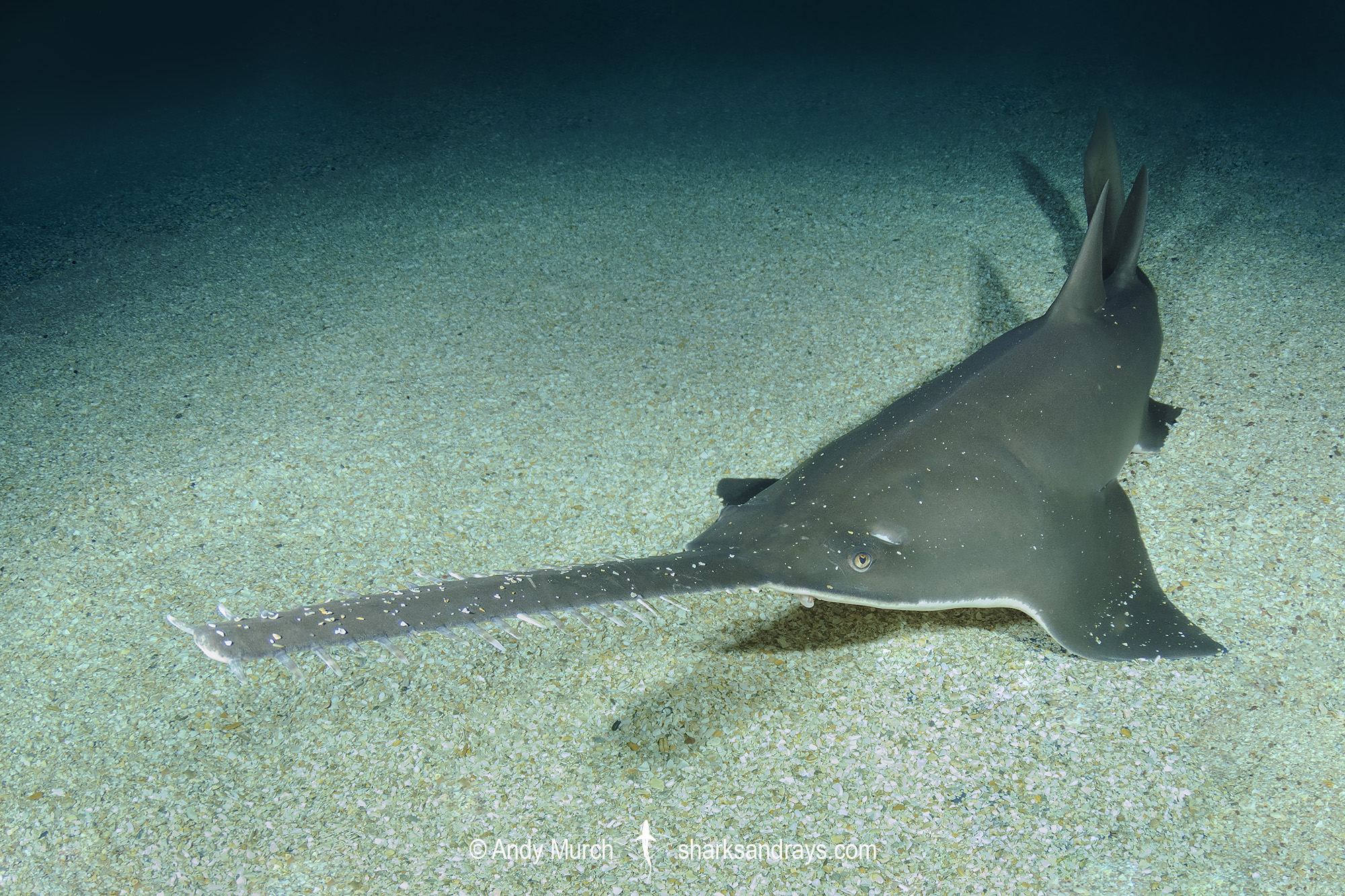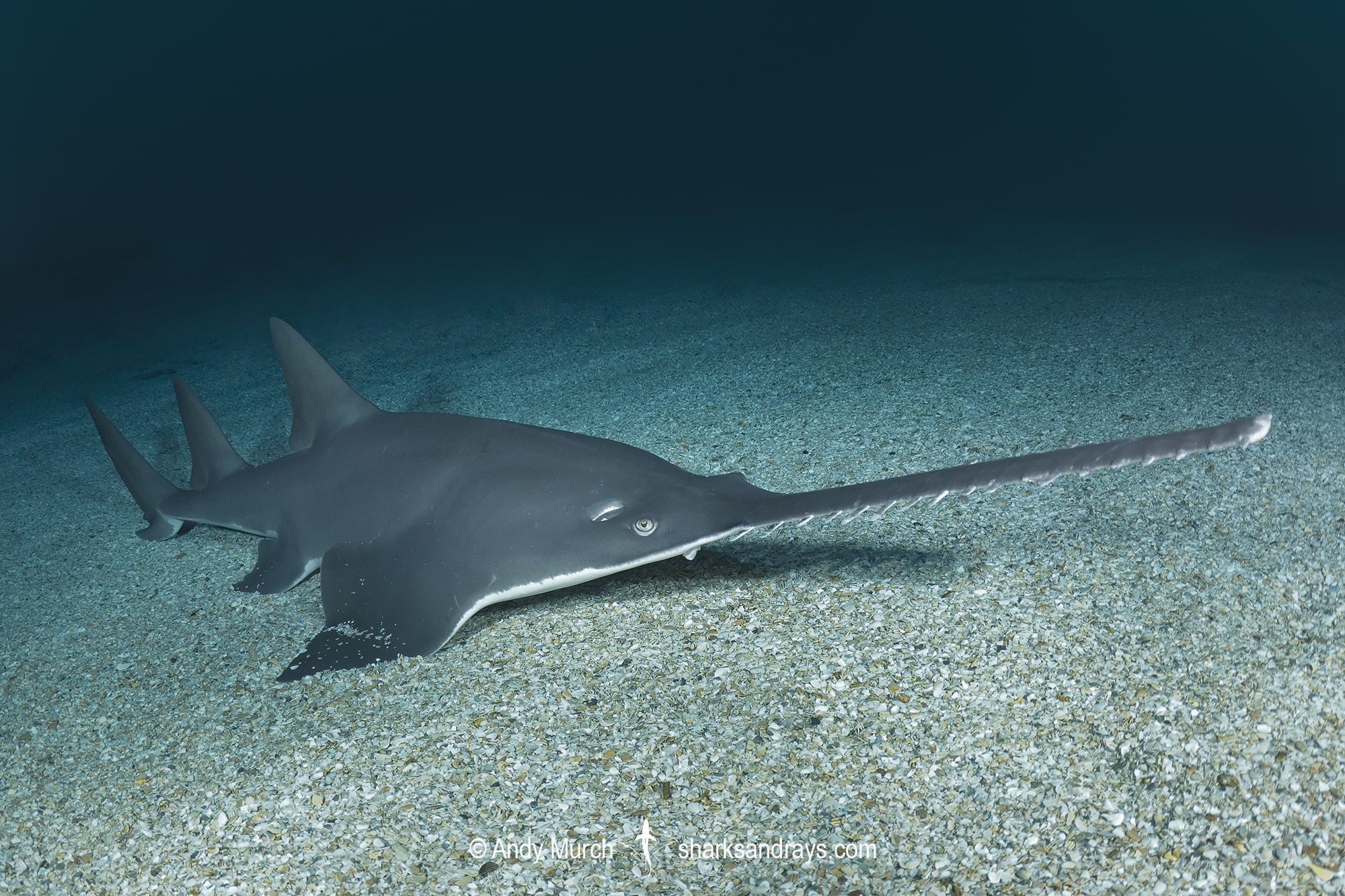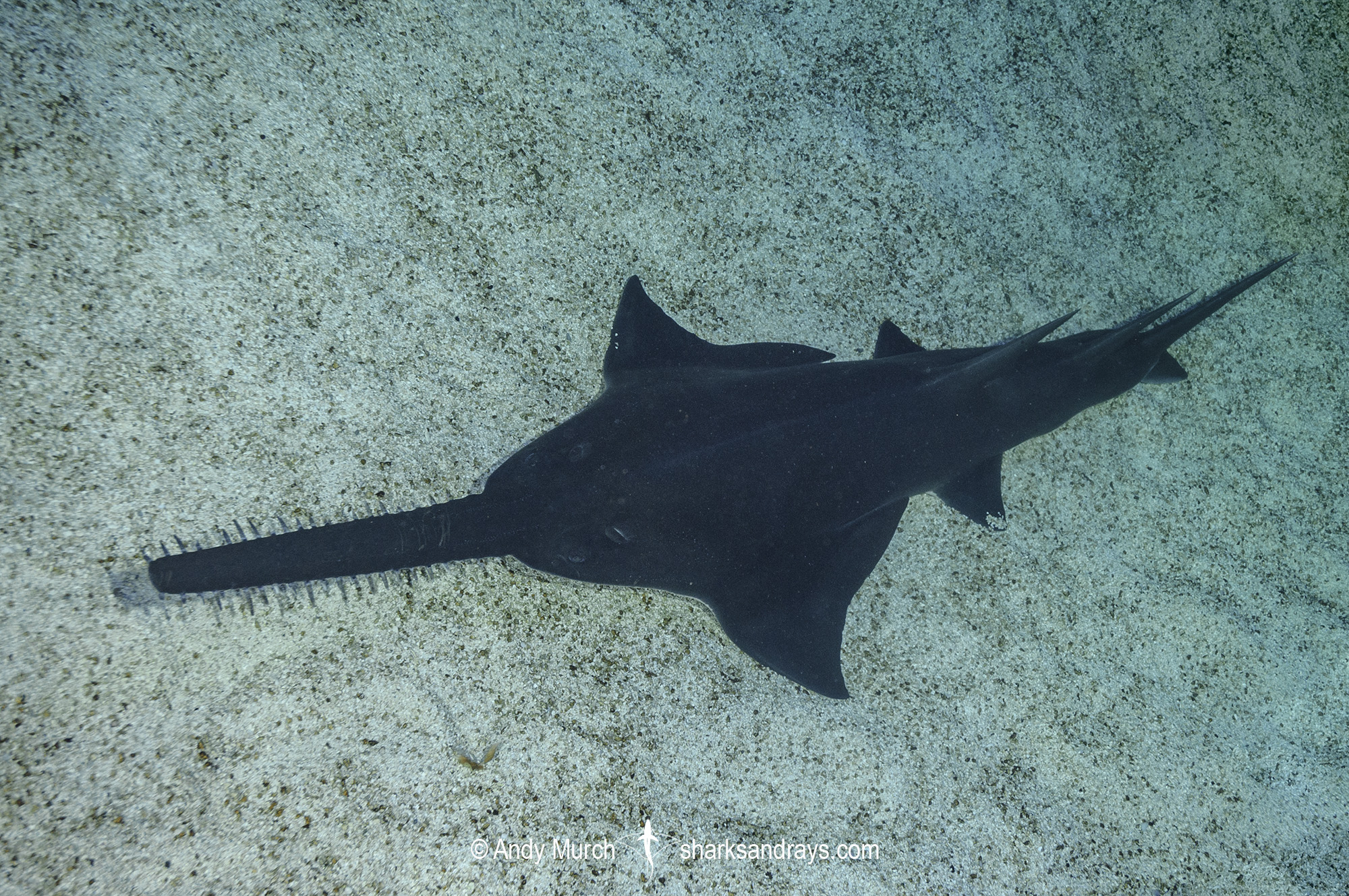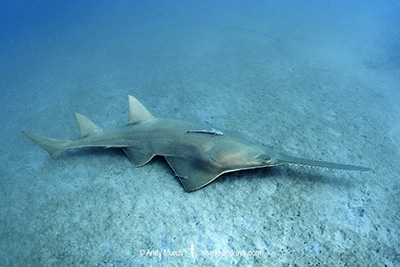Common name(s)
Largetooth Sawfish.
Identification
A large, heavy-bodied sawfish. Entire body covered with rough denticles. Rostrum broad and long, with 14-24 paired rostral teeth. Teeth slightly closer together at rostral tip than base. Rostrum length 0.27 x total length. First dorsal fin origin level with, or slightly posterior to free rear tips of pectoral fins. Dorsal posterior margins weakly falcate. Pectoral relatively wide, anterior margins weakly convex, posterior margins weakly concave, apices angular. Caudal fin posterior margin straight or weakly convex, with defined lower caudal lobe. One large lateral keel at caudal fin base.
Colour
Dorsum greyish-brown or yellowish. Ventrum White, Rostral teeth white.
Size
Maximum recorded length 656cm; possibly greater than 700cm. Size at birth 72-90cm.
Habitat
Tropical/ Subtropical inshore habitats. The largetooth sawfish is found in coastal, estuarine, and fresh water habitats. Usually shallower than 10m, but recorded at 26m in Lake Nicaragua.
Distribution
Historically wide-ranging along tropical coastlines in the Atlantic, Pacific, and Indian Oceans, but overfishing and habitat loss have resulted in widespread regional extinctions.
In the western Atlantic, largetooth sawfish are still seen in Brazil but observations from Central America are very rare.
In the Eastern Atlantic, Guinea-Bissau and Sierra Leone are the only two countries with confirmed sightings in the last 10yrs.
In the eastern Pacific the only sightings within the last 10yrs are from Columbia, Nicaragua, and Panama.
The remnant population within the Indo-West Pacific appears to be highly disjunct with very occasional sightings in Australia, Bangladesh, India, Madagascar, Mozambique, Pakistan, and PNG.
Conservation Status
CRITICALLY ENDANGERED
The Largetooth Sawfish (Pristis pristis) has undergone significant population declines and the species is now apparently extinct in many former range states. In most others, recent records are rare (e.g., there have been very few records in the Eastern Atlantic in the last decade). In the Western Atlantic, current records indicate that Largetooth Sawfish can only be regularly encountered today in the Amazon River basin, the Rio Colorado-Rio San Juan area in Nicaragua, and possibly some remote areas of French Guiana, Suriname, and Guyana. In the Indo-West Pacific, northern Australia represents a globally important remaining population centre. Overall, a population reduction based on a reduction in extent of occurrence (EOO) of ≥80% over a period of three generations (i.e., 1960s to present) is inferred. Despite protection in some range states (e.g., Australia, India, Brazil, United States, Mexico; it is possibly extinct in the latter two range states), threats are ongoing and the species is assessed globally as Critically Endangered.
Citation
Kyne, P.M., Carlson, J. & Smith, K. 2013. Pristis pristis (errata version published in 2019). The IUCN Red List of Threatened Species 2013: e.T18584848A141788242. https://dx.doi.org/10.2305/IUCN.UK.2013-1.RLTS.T18584848A141788242.en. Downloaded on 29 April 2021.
Reproduction
Aplacental lecithotrophic viviparous. Litter size 1-13 based on records from Lake Nicaragua.
Diet
Largetooth sawfishes mostly feed on fishes, crustaceans, and molluscs.
Behavior
Largetooth sawfish are able to move freely between fresh and saltwater. They are believed to give birth in shallow coastal or estuarine areas but the population in Lake Nicaragua remains in freshwater year round.
Reaction to divers
Unknown but probably shy.
Diving logistics
Largetooth sawfish encounters by snorkelers and divers in the wild are unheard of. Although Northern Australia and the Amazon Basin appear to have large enough remnant populations for potential encounters, visibility in both areas make underwater sightings virtually impossible.
What’s new
View our full list of updates
Similar species
Smalltooth Sawfish Distinguishable by slightly narrower rostrum, dorsal fin origin level with pelvic fin origin, and lack of defined lower caudal lobe.





